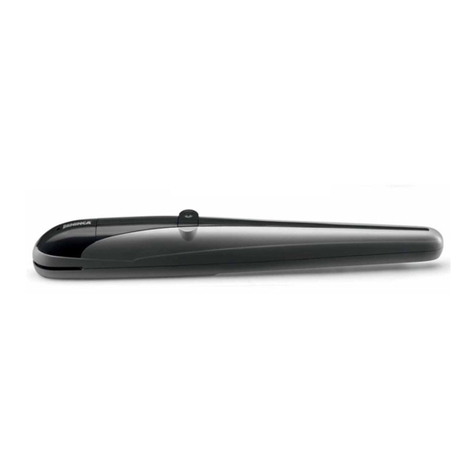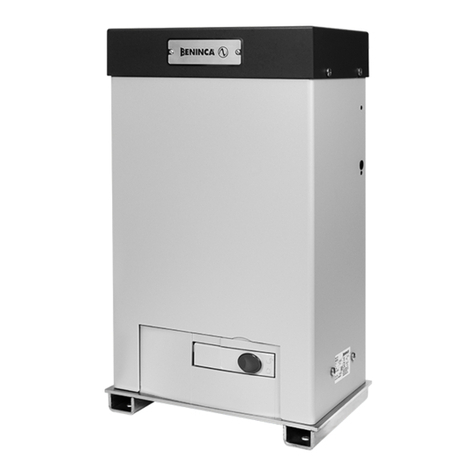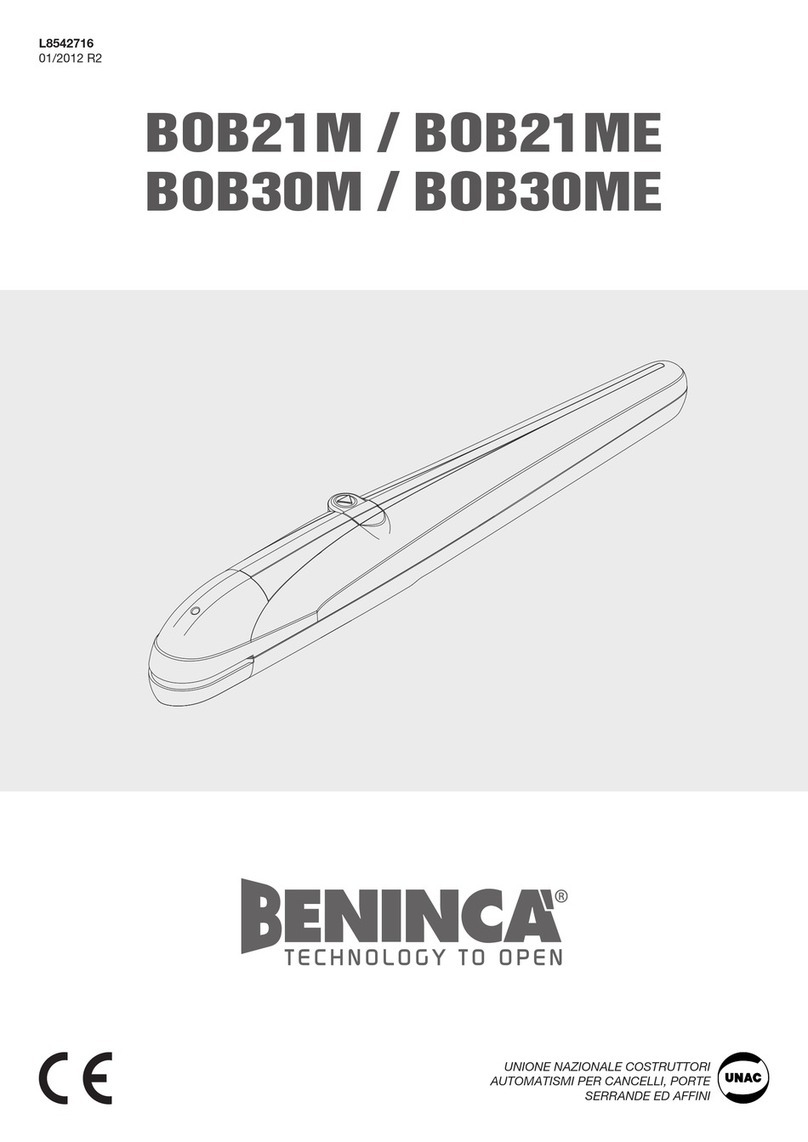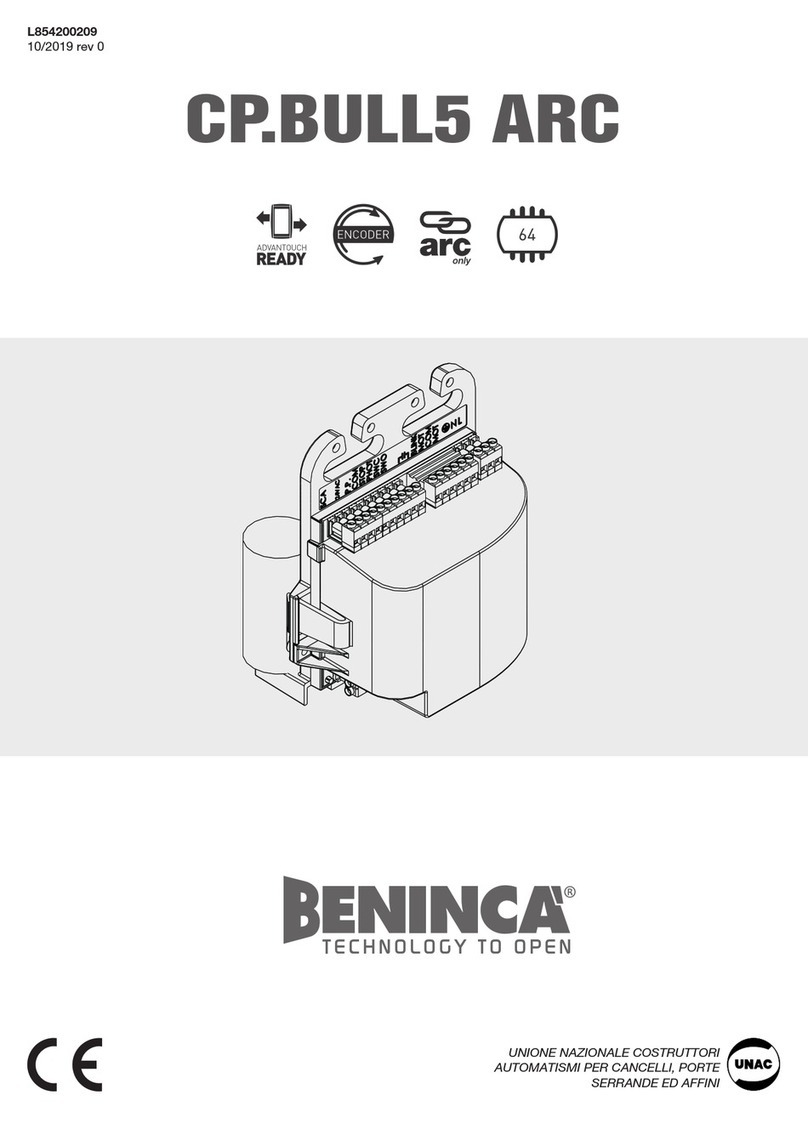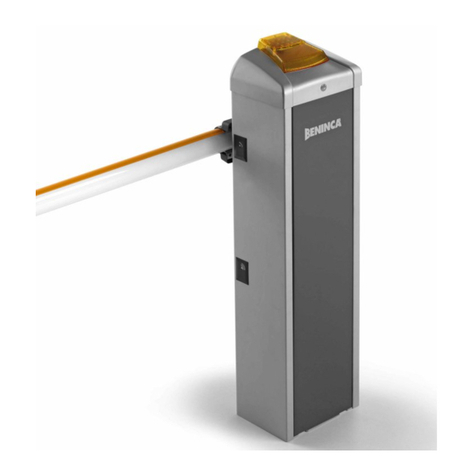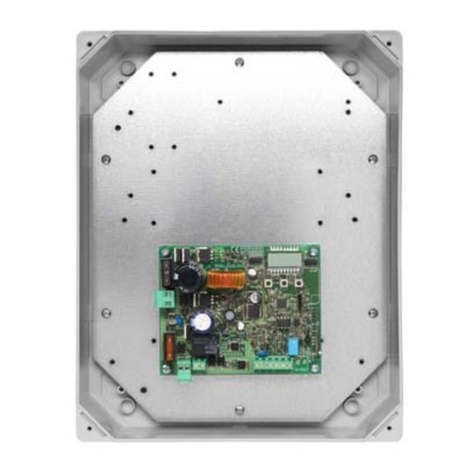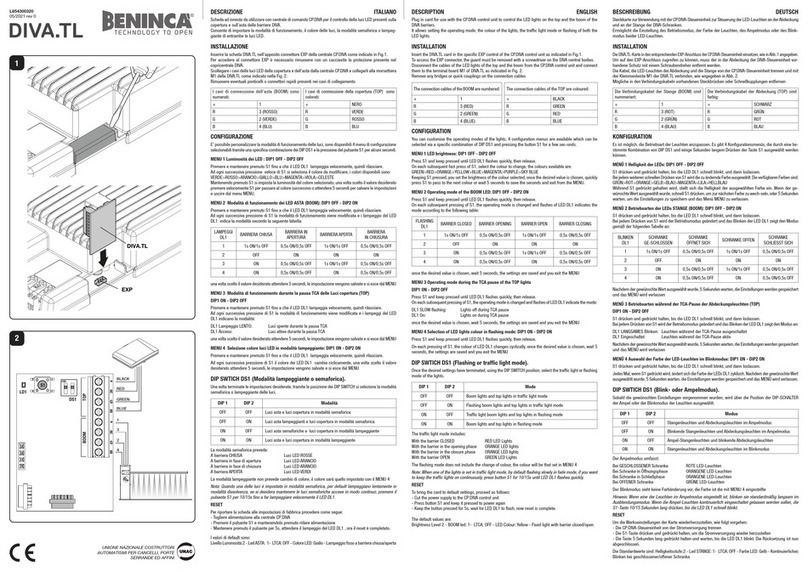
ATTENZIONE
• Primadiprocedereall’installazioneleggereleistruzioniquiripor-
tate.
• ÈfattodivietoassolutodiutilizzareilprodottoVN.MT40Vper
applicazioni diverse da quelle contemplate dalle presenti istru-
zioni.
• Istruirel’utilizzatoreall’usodell’impianto.
• Consegnareall’utilizzatoreleistruzioniadessorivolte.
• TuttiiprodottiBenincàsonocopertidapolizzaassicurativache
risponde di eventuali danni a cose o persone causati da difetti di
fabbricazione, richiede però la marcatura CE della ”macchina” e
l’utilizzo di componenti originali Benincà.
LIMITI DI IMPIEGO ED AVVERTENZE
Questo motoriduttore è progettato per la motorizzazione di porte
sezionali industriali e serrande non bilanciate. Prima di procedere
all’installazione, verificare il bilanciamento (dove previsto) e lo
scorrimento della porta. Controllare lo stato delle funi, delle molle
e del sistema paracadute. Nel caso di porte non installate recen-
temente, controllare anche tutte le altre parti soggette ad usura.
Quanto sopra è determinante per la sicurezza dell’impianto e per
l’affidabilità dell’operatore.
INSTALLAZIONE
Grazie alla sua versatilità, il motoriduttore può essere montato non
solo a destra o a sinistra della porta, ma anche orizzontalmente (fig.
2) o verticalmente (fig. 3). Il motoriduttore è progettato per azionare
direttamente l’albero avvolgifuni della porta che deve avere un dia-
metro di 1" (25.4mm) ed essere provvisto di sede per chiavetta.
Per alberi avvolgifuni con diverso diametro è necessario un adatta-
tore (art. VN.A30 per alberi Ø 30, art. VN.A3175 per alberi Ø 31.75,
art. VN.A40 per alberi Ø 40). Per il fissaggio procedere come segue
(fig. 4):
• ControllarecheladistanzatraalberoavvolgifuniAelasupercie
a cui si deve staffare, sia compresa tra 82 e 150mm.
• SaldareoavvitarelastaffaSallasuperciestessa.
• Inlareil motoriduttore nell’alberoavvolgifuni interponendo la
chiavetta C.
• AvvitarelevitiVdiserraggio.
• PerilmontaggiodellapiastrasullatoButilizzarelevitiTEM10x20
in dotazione.
Per calcolare la velocità di movimento della porta procedere come
segue:
V = d (tamburo avvolgifuni - metri) x 3.14 x 24 = metri/1'
Èpossibile utilizzareil motoriduttore rinviandoil motoall’albero
avvolgifuni tramite una catena (art. VN.RM) trasmettendo eventual-
mente il moto in modo ridotto o moltiplicato (art. VN.RV) (fig. 5).
Per calcolare la velocità di movimento della porta procedere come
segue:
V = d (tamburo avvolgifuni - metri) x 3.14 x 24 x Z1 / Z2 = metri/1'
CABLAGGI (fig. 6)
Per utilizzare il microinterruttore a disposizione come finecorsa di
sicurezza in chiusura, modificare i cablaggi come da fig. 7.
N.B.: le versioni 400V trifase possono essere utilizzate anche in
230V trifase variando il collegamento da stella a triangolo come
da fig. 8.
REGOLAZIONE FINECORSA
Il motoriduttore è dotato di 4 microinterruttori:
Finecorsa rosso Finecorsa apertura (SWO)
Finecorsa blu Extra corsa apertura (SWO XT)
Finecorsa giallo Finecorsa chiusura (SWC)
Finecorsa nero A disposizione per accessori (AUX)
Per la regolazione delle camme procedere come segue:
• Azionaremanualmentela portano a portarlain posizionedi
quasi totale chiusura e regolare la camma SWC fino quasi ad
azionare il microinterruttore (fig. 9).
• Serrareilgranocomeingura10,utilizzandounachiaveabrugola
da 2,5mm.
• Conlamedesimachiaveeffettuarelaregolazionemicrometrica
della camma come in figura 11.
• Ripeterel’operazioneconlaportainaperturaeregolarelacamma
SWO.
• PosizionarepoilacammaSWOXTinmodocheintervengacon
un leggero ritardo rispetto alla camma SWO.
• Alimentarel’automazioneefarlafunzionare(selaprimamanovra
risulta di chiusura invertire i fili 1 e 3 dell’alimentazione motore
fig. 6).
• Nelcasosirendesseronecessarieulterioriregolazioniagiresul
grano di regolazione micrometrica.
In figura 12 è rappresentato lo schema di collegamento dei fine-
corsa.
Dati tecnici VN.MT40V
Alimentazione nomin.
Assorbimento nomin.
Potenza nominale
Coppia nominale
Foro albero uscita
Giri in uscita
*Rapp. riduzione F. C.
Intermittenza lavoro
Temp. funzionamento
Lubrificazione
Peso
Dimensioni: vedi fig.1
3x400V (50/60Hz)
2,2A
900W
185Nm
25,4mm
24rpm
1/40
80%
-20°C / +70°C
Agip Blasia 32
22,5kg
* Max. numero di giri eseguibile dall’albero di uscita.
Pesi teorici per serrande non bilanciate
(Kg)
Diametro tubo
(mm)
Forza sollevamento
(kg)
Peso max. serranda
(kg)
83 446 312
98 377 264
108 343 240
133 278 195
159 233 163
N.B.: Valori teorici influenzabili dalle condizioni di installazione.






